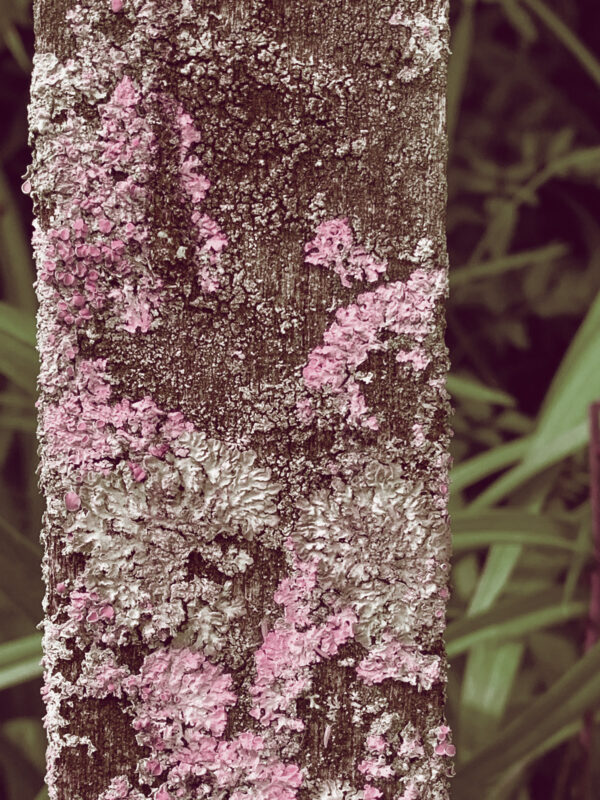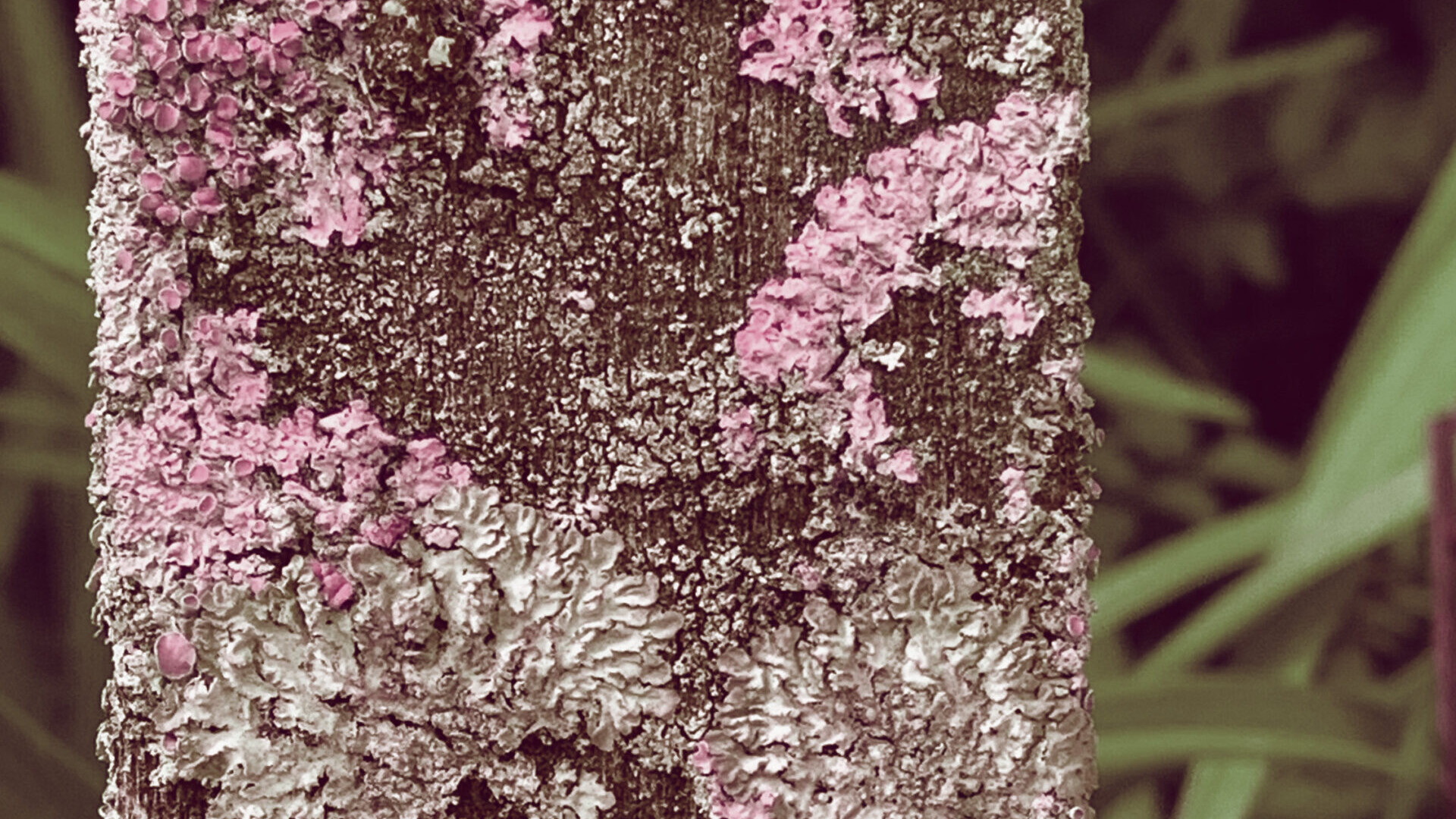Family: Teloschistaceae
Scientific Name: Xanthoria parietina
Common Name: Golden Shield Lichen
Origin: Globally distributed
On this bench you will find several species of Lichen, as well as mosses. Look closely and you will see Xanthoria parietina, golden shield lichen. It stands out due to its golden colour. Lichens are often overlooked due to their small size but are important organisms for our planet.
Lichens were once thought to be part of the plant kingdom until they were discovered to be something completely different. Lichens are a partnership between fungi and either algae, cyanobacteria or yeast. The fungus provides a home and the algae, cyanobacteria or yeast turns sunlight into sugar through a process called photosynthesis. They are photosynthetic partners and can reproduce both sexually and asexually.
In the article ’Queer Theory for Lichens‘ the lichenologist David Griffiths discusses how lichens can suggest a queer ecological way of thinking about life. He argues that lichens demonstrate that life is about interconnection as opposed to individual reproduction.[1] Lichens and other forms of symbiosis are not exceptions in nature but are just one of many examples of two or more organisms coming together to benefit each other. This supports a queer idea of kinship, multi-species connections, and mutualism rather than emphasising sexual reproduction.
[1] Griffiths, D. (2015) ‘Queer Theory for Lichens’, UnderCurrents: Journal of Critical Environmental Studies 19. < https://core.ac.uk/download/pdf/235683163.pdf> (Accessed: 20 October 2022)
Audio version read by Queer Botany founder, Sixto-Juan Zavala:


